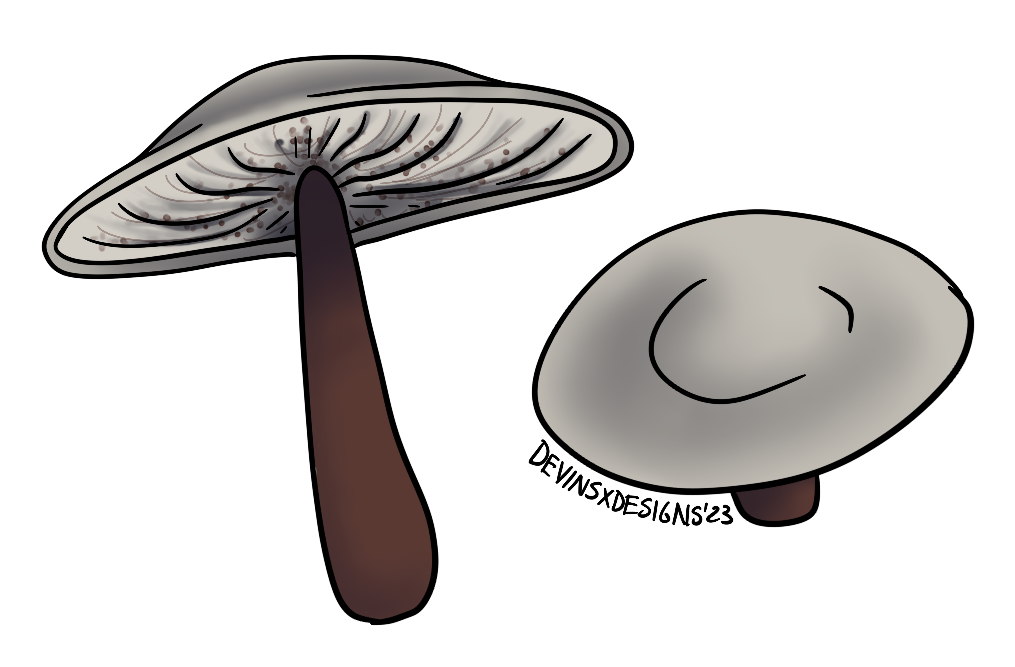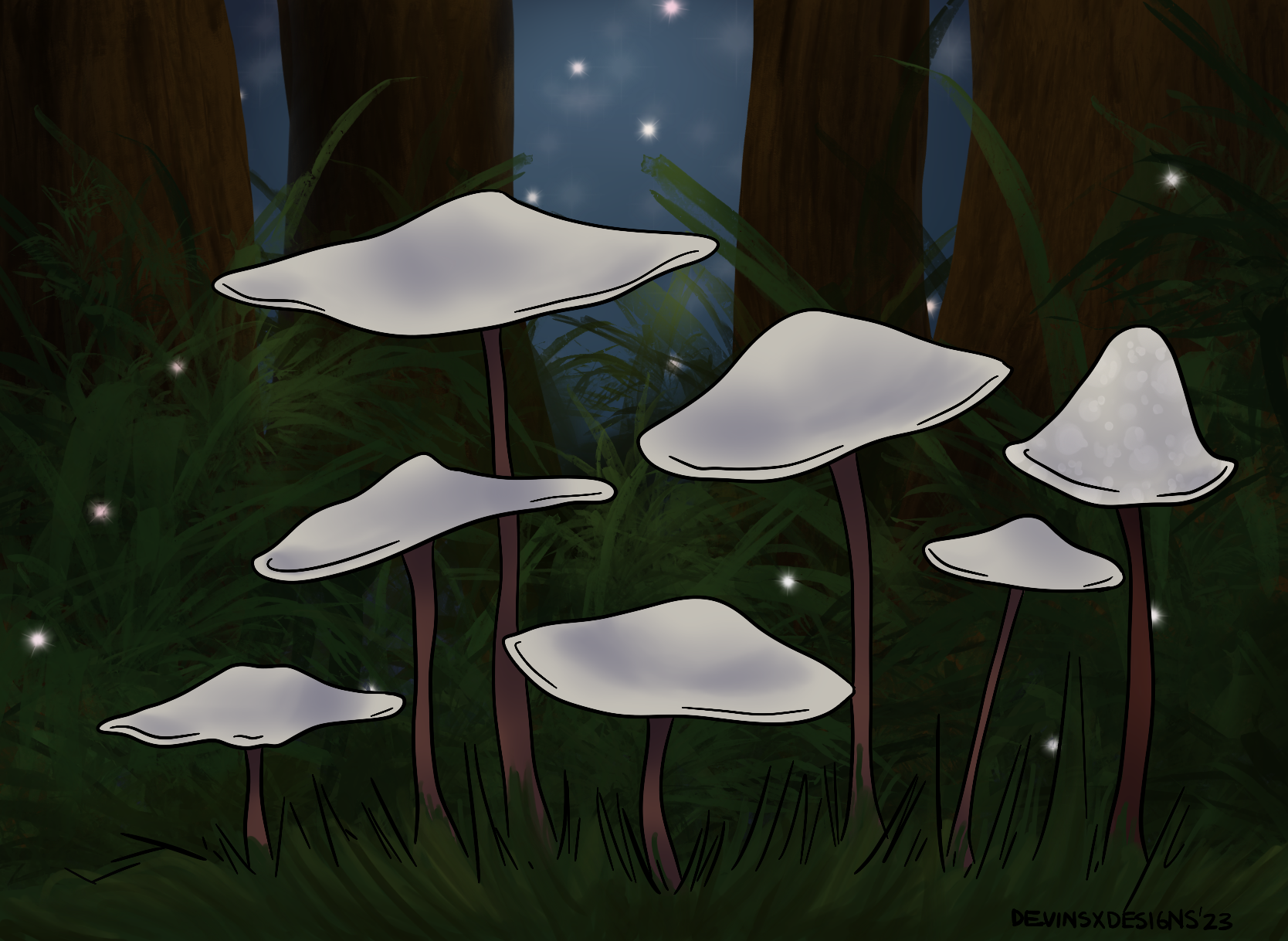Mooncaps
Mooncaps are a popular mushroom because each of their parts, when properly collected and preserved, have value (medicinal, recreational, and nutritional). They are found in wooded and forested areas of temperate climates.
Basic Information
Anatomy
The cap of the mushroom is a creamy, uniform off-white color. It has a shallow "campanulate" or bell shape. The gills of the mushroom are slightly lighter in color than the cap and attached "subdecurrent", or "attached to and running downward along a stem or stipe, but curving inward just before the attachment point". The stem or stalk is slim, of uniform width, and a uniform dusky pink-mahogany color.
Genetics and Reproduction
The mushrooms reproduce by the spreading of spores. The spores of the healthy mushroom are a light pink color and spread when the mushrooms are disturbed by harvest or animal life, or when a mature mushroom dies.
Growth Rate & Stages
The mycelium, or undergound "root system" of the organism, can live for thousands of years once properly rooted. A Mooncap system is fragile and juvenile for about 50 years and requires frequent ability to produce mushrooms and re-spore during those first 50 years to become truly healthy. After that initial period, the system can live for vast periods of time through drought, fire, or a complete change of landscape without producing mushrooms above ground and still have healthy mycelium underneath. Over-harvest of mushrooms during that first fifty years is a major contributor to why a new colony might not take root and become a healthy colony.
The organism feeds on decaying plant and animal matter in the undergrowth and soil, and stores nutrients in the mycelium. When conditions are right, the colony will produce mushrooms above the surface. When those mushrooms eventually die, the spores released help both regenerate the colony as well as travel to reproduce and create new colonies.
Ecology and Habitats
Mooncap mushrooms grow in temperate forests and wooded areas. They can be somewhat resistant to extreme heat and cold for short periods, such as winter and summer, but require periods of medium tempertures to thrive and produce "fruit" (mushrooms). Furthermore, they do not thrive in direct sunlight. Exposure to direct sunlight will immediately damage and then kill the mushroom and spores, preventing both rejuvenation of the existing colony or reproduction of a new colony. The organism does best in deeply forested areas where direct sunlight does not reach, but small organisms can be found in lightly wooded areas or on the edges of forests where mushrooms will grow literally overnight and then wither and die in the morning.
Dietary Needs and Habits
The organism's hyphae, which are individual hair-like strands of mycelium, collect and store nutrients. They excrete enzymes to help break down organic matter, both plant and animal, which aids the decomposition process and helps get more nutrients for the organism.
Biological Cycle
The organism is mostly dormant in the deepest of winters and hottest of summers, as well as in drought conditions.
Behaviour
The Mooncap, when eaten without being properly dried, causes extreme digestive upset. Another mushroom which often grows alongside it, and which can be hard to distinguish from the Mooncap, can be deadly. These two things combined make wildlife and uninformed people wary, offering the organism some protection.
Additional Information
Geographic Origin and Distribution
Perception and Sensory Capabilities
There is some evidence that large, old growth colonies of Mooncap mycelium has the ability to gather, store, and transmit information about the world in which it exists. Druidic peoples, some of The Folk, and others with magic particularly connected top nature have reported being able to "speak" to some of these very old Mooncap colonies.
Header image by Monique Laats on Pexels; illustrations by devinsxdesigns.
An Imposter
The mushroom on the far right, known as the Forager's Folly, is a species that grows in amongst the Mooncaps that is toxic and has no redeeming qualities. It can be identified by it's conical shape, slightly darker stalk, faint spots on the cap, and red spores. It also sometimes grows with a "double stalk" configuration, which the Mooncap never does.




Comments